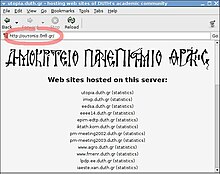- Impact
- 3,536
-These are just a couple of many that are on featured domains at Sedo.com, there are very many!
Sedo had stopped allowing them for some time now but slipping back in to their old ways.
They are shown as IDN but they are simply mixed script, English and other languages cobbled together, to look like real English words. Many people have been caught out by this type of worthless rubbish in the past both on Sedo and on the various forums.
holíday.com
amerìca.com etc.
Well done NP's for removing many of them from the forum.
Make sure you don't get caught by them, particularly if you are new to domaining.
Sedo had stopped allowing them for some time now but slipping back in to their old ways.
They are shown as IDN but they are simply mixed script, English and other languages cobbled together, to look like real English words. Many people have been caught out by this type of worthless rubbish in the past both on Sedo and on the various forums.
holíday.com
amerìca.com etc.
Well done NP's for removing many of them from the forum.
Make sure you don't get caught by them, particularly if you are new to domaining.









